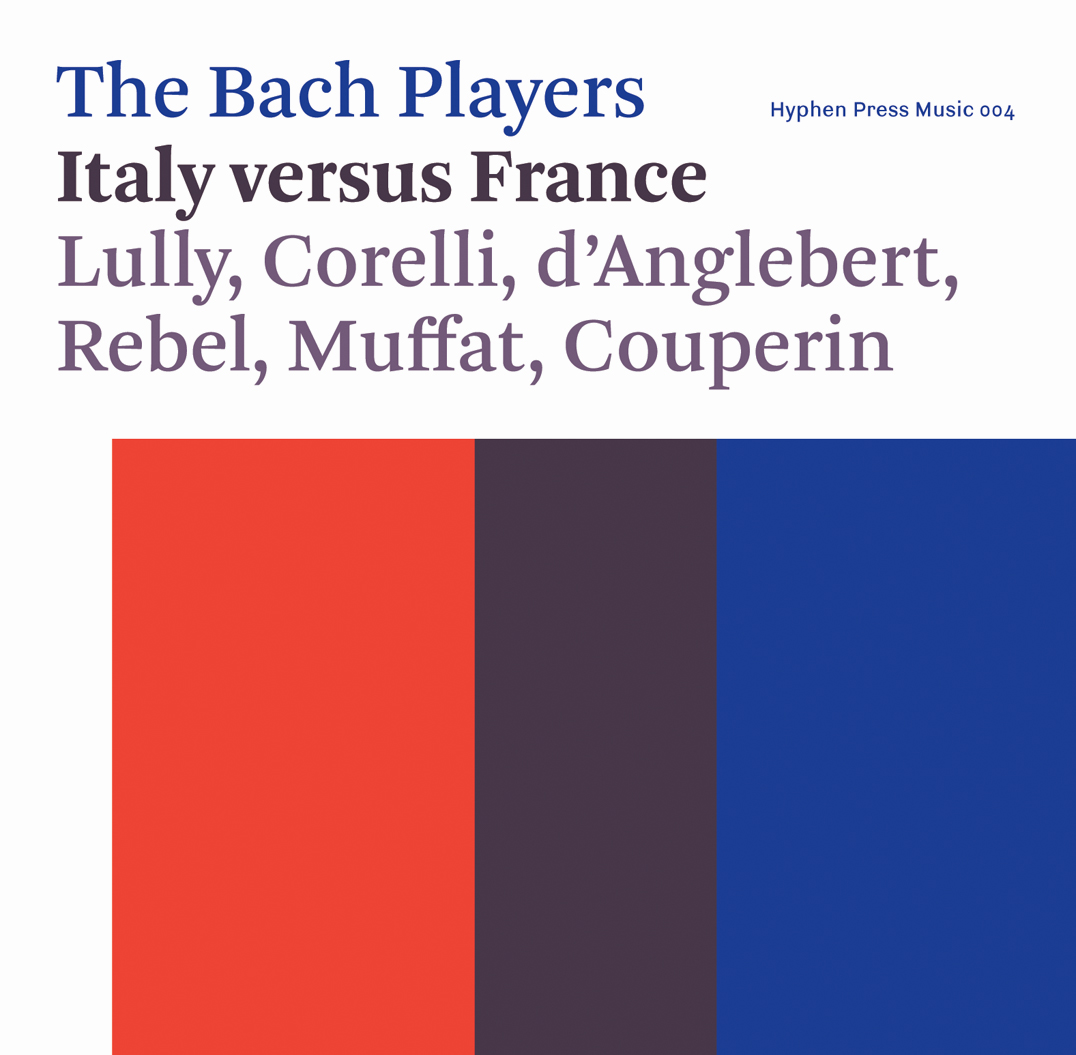Back to Reviews
‘Italy versus France’ reviewed in IRR

Simon Heighes has reviewed our CD ‘Italy versus France’ for International Record Review.
Ah, the winds of fashion, how they do blow hot and cold. On the catwalks today we raise an appreciative eyebrow for Chanel (such timeless, understated elegance), while arching the other at Gucci (vulgar, vulgar, vulgar). In the seventeenth century, it was just the same. Which was better, the French or Italian musical style? Innumerable efforts were made to distinguish between the two, and to raise one country up above the other. As early as 1636 the musical theorist Mersenne claimed that the two styles were fundamentally at odds with one another. For him, the ‘extraordinary violence’ of the Italians could not easily be reconciled with the ‘perpetual sweetness’ of the French.
Nearly four centuries later, The Bach Players want to revive the argument. Or rather it provides them with a convenient pretext for bringing together a collection or French and Italian chamber music so that we can hear the differences and similarities for ourselves. Just in case things should get quarrelsome, they’ve included a suite and sonata by the German composer Georg Muffat, whose music sought to combine the best of both worlds – French and Italian – for audiences back home in Germany.
There are charming solo contributions from harpsichordist Silas Wollston and lutenist Jakob Lindberg. Lindberg makes jaunty work of a tuneful Musette by Robert de Visée, highlighting a repeated melodic note with some witty, ringing vibrato. Wollston even-handedly offers French and Italian fare: a serious Toccata by Bernardo Pasquini, nicely pointed and articulated; and a deeply felt Tombeau for the harpsichordist Chambonnières by Jean Henry d’Anglebert, which he handles with delightful curvaceousness. These tombeaus – memorial tributes to the worthy dead and buried – were popular in seventeenth-century France, and we get two more later in the concert. Jean-Féry Rebel’s long Tombeau of c. 1712 remembers that giant of French music Jean-Baptiste Lully, but in texture, and form which recall the Italian trio sonata. Rebel may have been remembering that Lully was in fact born in Italy, but the performers here edge their performance with graceful articulation and loving phrase structures which have a strong French accent.
Francois Couperin’s tombeau-like trio sonata of 1724 is grandly titled ‘Apothéose de Corelli’ and – along with a similar work dedicated to Lully – expressed the entente between the French and Italian styles which he passionately believed in. Each of its seven movements has its own fanciful title, which are duly announced here in beautiful French. The fifth movement is entitled ‘After his enthusiasm Corelli falls asleep and his troupe plays the following sommeil’, and The Bach Players oblige with heart-melting delicacy. Muffat’s sonata (1682) and suite (1698) also blend French and Italian styles with considerable imagination, though the performers are good at pointing out to us the Frenchness of the dances and the harmonic asperity and contrapuntal intrigue of the Italianate movements. In the hands of The Bach Player the opening Grave of the Sonata in G minor is exceptionally delicious – every one of the searing suspensions really made to count, melting into one another and resolving again like waves on a resonant musical shore.
This the most enjoyable programme of seventeenth-century chamber music I have heard in a long time. The recording manages to capture the strings in gutty rather than silvery detail so we relax and enjoy the music without suffering from steel-string fatigue. Altogether, this is a wonderfully diplomatic programme which brings the best out in everyone – French, Italian, German and performers alike.
International Record Review, May 2011